Strainer Options
Sure Flow Equipment has a number of options for our strainers which ensure they can meet any of customers unique requirements.
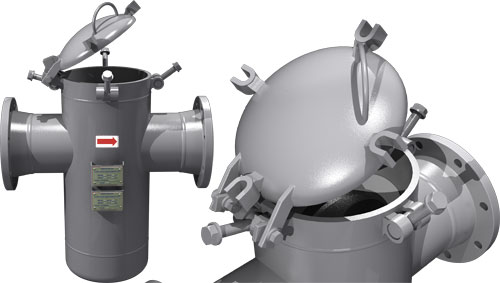
Quick Open Covers
Quick open covers can replace the normal bolted cover on strainers. There are several types available including tee bolt, yoke type and threaded. Each has its advantages and disadvantages. All quick open covers are easier and quicker to open than bolted covers. They often require less or no tools. Some quick open covers can be fitted with davit assemblies to aid in cover removal.
Pressure Gauge Connections
Strainers can be fitted with a connection to attach a pressure gauge. This allows the pressure in the strainer to be measured. The pressure gauge connection can be flanged, threaded or socket weld. It is usually located at a high point on the strainer.
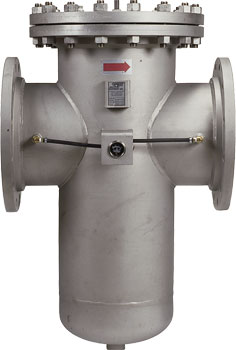
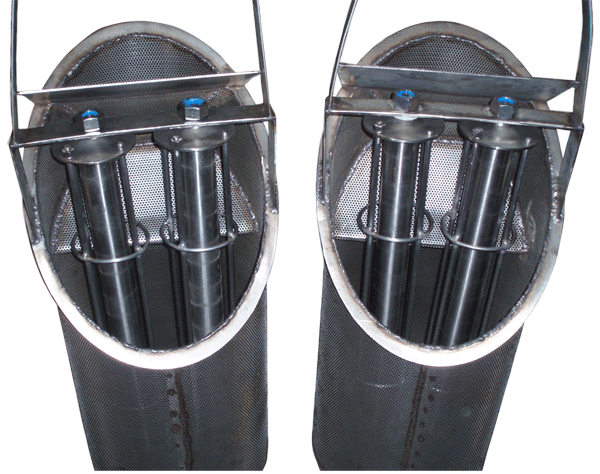
Magnetic Inserts
A Sure Flow basket or screen can be mesh lined to trap very small particles in the fluid being strained. However, there are fluids that may contain microscopic metallic filings. The finest mesh will not catch these particles. This can be a problem in applications with parts that have metal to metal contact.
An effective solution to the problem of excessive and premature wear of pump seals, wear rings, bearings, gears, etc. is a magnetic screen assembly. A standard strainer basket or screen is fitted with magnets which are removable for cleaning. They are arranged to create a magnetic field around the interior of the screen or basket. The magnets attract the fine ferrous particles which would pass through the mesh and could damage the downstream equipment.
Magnets can be incorporated into most types of strainers, including y type, basket, and temporary cone strainers.
Davit Assembly
The davit assembly attaches to the cover of the strainer. It allows the user to easily swing the cover away to facilitate removal and cleaning of the basket or screen. It is used primarily on large size strainers with heavy covers that may be otherwise difficult to remove.
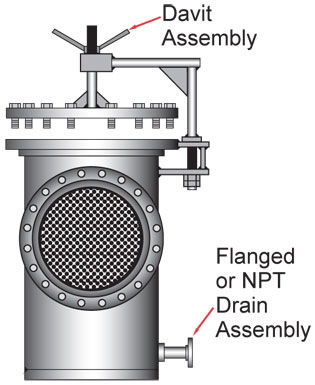
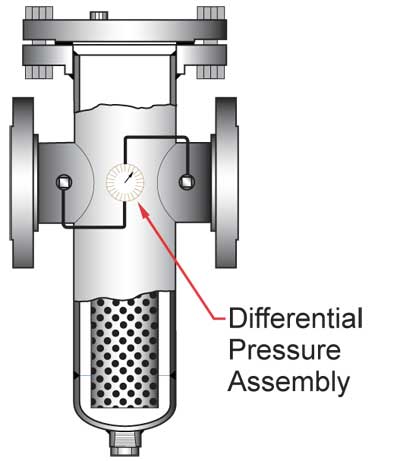
Differential Pressure Gauge Connections
A differential pressure gauge can measure the pressure drop across a strainer. As the basket or screen fills up with debris and becomes clogged, the pressure drop will increase. Monitoring the reading of the differential pressure gauge can help to determine when the basket needs to be cleaned. Threaded or flanged connections are attached to the inlet and outlet nozzles of the strainer. The differential pressure gauge is attached to these connections. Sure Flow can provide the connections only, or provide the entire differential pressure gauge assembly.
Special Epoxy Paint
Epoxy coating is a major defense against corrosion of a strainer. Epoxy coating can be applied to the interior of a strainer that contains corrosive fluids. Epoxy coating can be applied to the exterior of a strainer that is in a harsh environment. Or, it can be applied to both the interior and exterior of the strainer. Epoxy coating is available in many varieties, with something available to suit most applications.
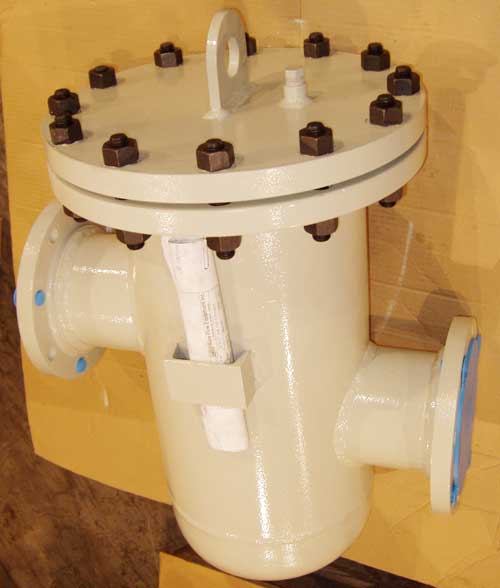
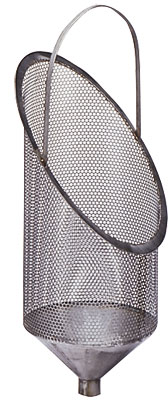
Cone Bottom Basket
The baskets in basket strainers can be fitted with cone bottoms that feed into the strainer’s drain connection. The drain connection is opened and the debris filtered by the basket is flushed out the drain. This allows the basket to be cleaned without opening the cover. The cone bottom basket can be combined with an electric ball valve drain to further automate basket cleaning.
Non-destructive Testing
A range of non-destructive testing can be performed on strainers. The most common tests are radiographic examination, ultrasonic examination, magnetic particle inspection, liquid penetrant examination, hardness testing, and impact testing.
Radiography (RT) is a method of detecting imperfections in welds by passing x-ray or nuclear radiation through the material/weld and presenting the image on a recording medium. Radiography is normally performed on full penetration butt welds. It can be specified as spot/random or full radiography, which denotes the quantity of welds to be examined.
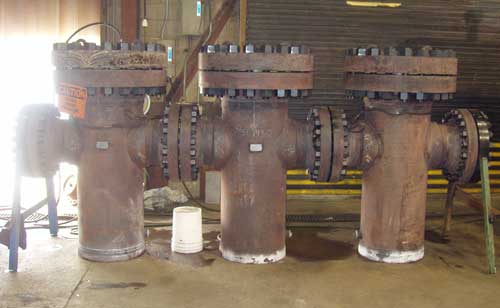
Ultrasonic examination (UT) is similar to radiography in that it used to detect imperfections in welds. This is accomplished by passing ultrasonic vibrations through the material/weld. Ultrasonic examination is normally performed on full penetration butt welds. It can be specified as spot/random or full examination, which denotes the quantity of welds to be examined.
Magnetic particle examination (MT) detects cracks and similar imperfections at or near the surface in iron and magnetic steel alloys. The material is magnetized and fine magnetic particles are added to the surface. The particles form patterns which reveal any imperfections. Magnetic particle examination is often performed on machined surfaces and fillet welds.
Liquid penetrant examination (PT) is similar to magnetic particle examination. It detects imperfections at the surface of ferrous and nonferrous materials. Typical imperfections detectable are cracks, seams, laps, cold shuts, and laminations.
Hardness testing can be performed on welds and materials. It is often specified for sour service in the oil and gas industry. Excessively high hardness values may mean that the material or welds are brittle and may be susceptible to cracking or failure when placed into service.
Impact testing can also be performed on the welds and material. It is often required when the strainer will be subject to low temperature service conditions. The impact testing measures the brittleness and impact strength of the material being tested.
Steam Jacketing
Special processes may warrant special strainer housings. Carbon steel or stainless steel strainers may be fitted with a fabricated outer jacket with connections for the introduction of steam or other heating fluid. These types of strainers are used mainly in applications where the fluid handled must be maintained at above ambient temperatures to remain liquid. Examples are the straining of asphalt, tar, resins and polymers.
Oxygen Cleaning
Strainers intended for use in an oxygen-enriched environment have stringent cleanliness requirements. Sure Flow oxygen cleaning will prepare a strainer to operate in an oxygen-enriched environment. Oxygen cleaning removes organic and inorganic contaminants. We are able to clean strainers to ASTM specifications or to your required industry or company standard.
Electric Ball Valve Drain
The drain connection on the strainer can be fitted with an electric actuated ball valve to aid in draining the fluid from the strainer. This is often combined with a cone bottom basket.

